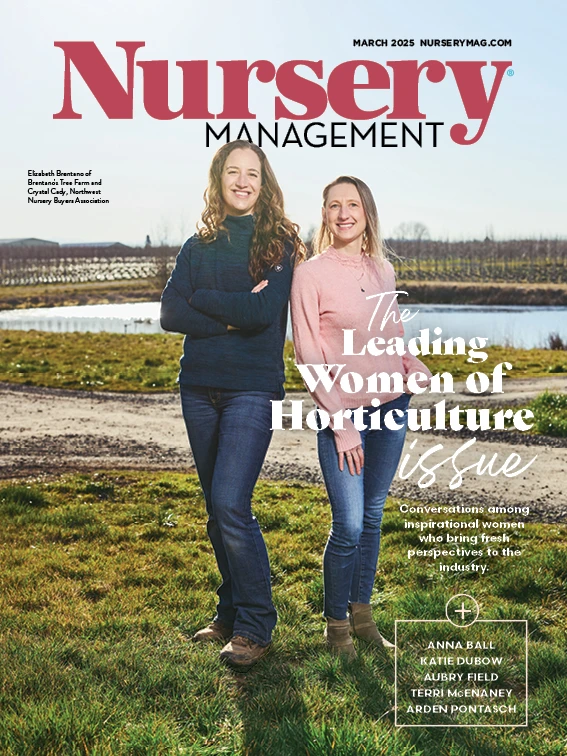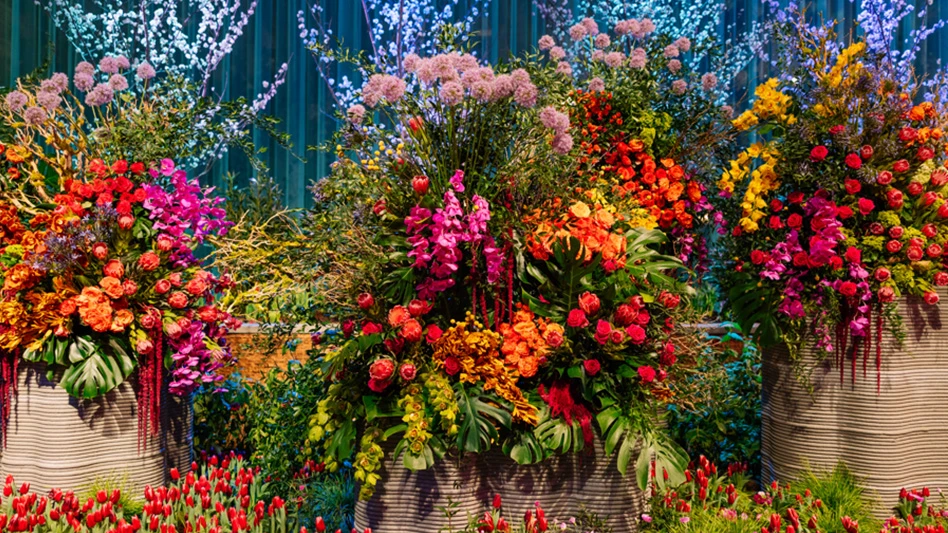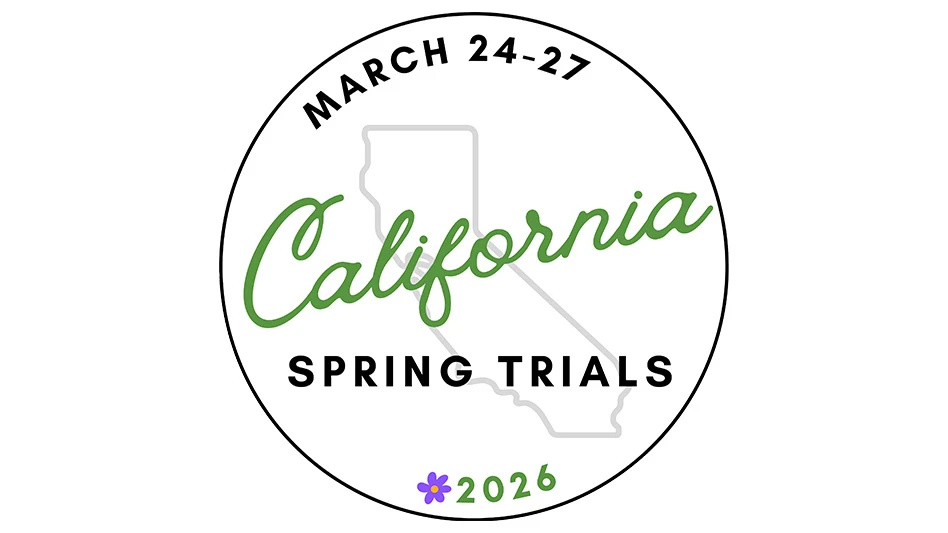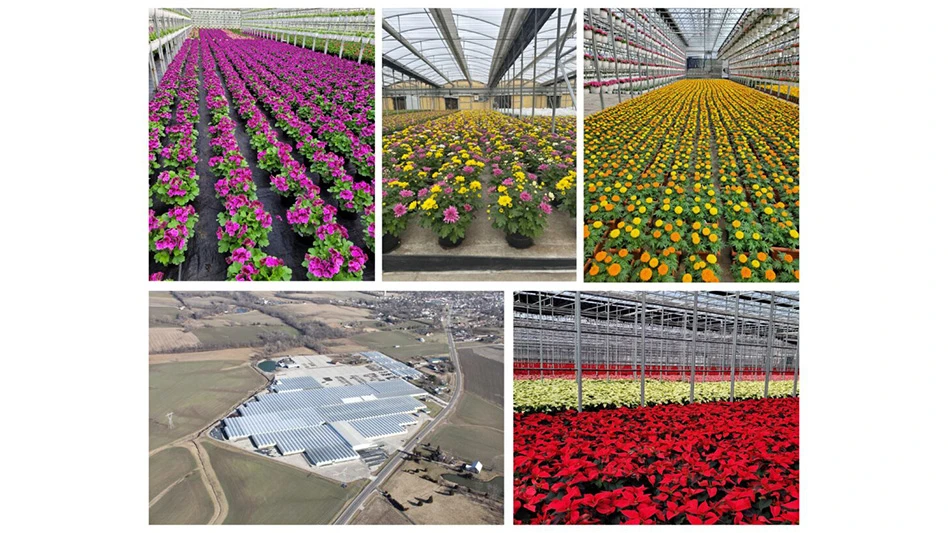
PHOTO: FIRST EDITIONS SHRUBS & TREES
There are many skills and professions that are considered both art and science. Truly, any professional who has mastered their craft to the point of innovating and challenging the conventions of their field could be considered an artist. As a plant breeder, I’ve always considered this field to embrace the best of both worlds. Plant breeders can benefit from a solid understanding of plant biology, genetics, physiology, anatomy and general horticulture. But once the fundamentals of plant science are understood, the breeder (artist/scientist) can create works that rival the most beautiful paintings. Ornamental horticulture is a medium that allows homeowners, gardeners and landscapers to craft masterpieces out of their natural environments. As plant breeders, we want to inspire people to create their own masterpieces by providing them with a diverse pallet of plants that stimulate the senses.
Similarities with other arts
Plant breeding has always been closely associated with genetics and science. However, you might be surprised to learn how many similarities this field shares with other visual arts. Plant breeders create living works of art, some of which take decades to complete. While our deadlines might be on a different scale, we utilize many of the same fundamentals that apply to drawing, painting, sculpture, photography and architecture.
Color
Contrasting and complementing colors are a big facet of any ornamental plant’s appearance. Often, plants exhibit various shades of green, but so many iterations of popular colors can be found in a single genus. Think about Hydrangea macrophylla and how many shades of pink (bubblegum, flamingo, fuchsia, coral, cerise) and blue (cerulean, azure, cyan, royal, navy) exist in modern cultivars. Having flower colors that complement leaf color is always desirable, but sometimes contrasting colors are popular. Want to know one of the most requested phenotypes (physical appearances) for new plants we receive? Dark leaves with white flowers. This combination of colors exists in plants like First Editions Lunar Magic Crapemyrtle. Still, there are plenty of other genera that can accomplish this feat, and there are plenty of people out there who appreciate the contrast.
Form and proportion
The size and shape of a plant’s habit directly impacts how it’s used and viewed in the landscape. Whether a plant is considered compact, fastigiate, prostrate, conical or rounded, its form and proportion dictate how it contributes to a composition. These forms can create vertical branching elements, naturally round mounds of flowers, tall cones of green leaves and a multitude of other aesthetics that designers use to infuse variety into the landscape. For plant breeders, a single genus will often provide a multitude of forms that can be combined with other desirable characteristics to craft unique additions for the home garden.
Texture
Texture is such an important aspect of garden compositions, and plant breeders often take textures into account when thinking of needs for the landscape. Consider the textural differences in Pinus thunbergii vs. Acer palmatum vs. Magnolia grandiflora. All provide very different aesthetics with just their foliage. Even within a single genus, like Distylium, you can find a wide range of foliar textures, some of which are more desirable.
Movement
Movement is closely tied to form and habit, like how the weeping branches of Cercis ‘Ruby Falls’ seem to droop to the ground or how the narrow Juniperus virginiana ‘Taylor’ seems to reach up into the sky. But movement can also be conveyed literally, like with the lacey and elegant branches of a willow swaying in the wind or the ripple of lavender that washes over First Editions Flip Side Chastetree, when a breeze exposes the purple underside of the leaves.
Negative space
Negative space is often utilized by landscapers in their compositions but sometimes a single plant can convey this effect as well. Think of ‘Harry Lauder’s Walking Stick’ and the sinuous, somewhat haphazard negative space created when all the leaves have dropped. Or consider the cauliflorous nature of the eastern redbud and what a lovely effect the absence of leaves makes for its spring flowers. Whether a plant breeder is working with deciduous trees or evergreen shrubs, the fullness (or lack thereof) of the plant’s appearance factors into its ultimate appearance.
Incremental improvements
As with any art, improvements in skill and ability occur over time. So, too, does the artist’s capacity for innovation and creativity. A plant breeder might discover a new technique that improves their ability to generate seed or germinate seedlings. As breeders learn more about the genus they work with, they learn new ways to manipulate traits from the pallet of parents at their disposal, which then provides a suite of desirable characteristics for the artist to manipulate.
Differences with other visual arts
There are, of course, some pretty major differences in plant breeding as an art vs. other mediums. Instead of a canvas, we use a genus; instead of paint, we use pollen; instead of a paintbrush… OK, we actually use paintbrushes to move pollen from flower to flower, but you see where I’m going? It’s just a difference in the media and mediums we use to create the art we love. Our projects can take decades to complete, but so did some of the most impressive structures and sculptures ever built. Some of our projects exist solely to advance future projects that haven’t even begun yet! But is this so different from other artistic endeavors? Doesn’t every artist strive to improve their work with each new creation?
For plant breeders, all these aspects of art come together to complement or contrast with one another for each project we begin. As an artist learns what works and what doesn’t, they undoubtedly make some mistakes along the way. But from these missteps comes a greater understanding of one’s craft. Through this greater understanding of the rules, an artist learns which ones can be broken and how to do so effectively. Pablo Picasso once said, “Learn the rules like a pro, so you can break them like an artist.” As with any art, breaking the rules in plant breeding means you run the risk of alienating those with more traditional values or perspectives. But only through challenging those perspectives can one truly innovate.
Art is subjective; not every creation will resonate with every person. A plant breeder might create something they think is brilliant but doesn’t impress anyone beyond the most consummate aficionado. Some artists create work for the masses. Some artists create work that speaks to their soul. All artists create work they’re passionate about to share that passion with the rest of the world.
David Roberts has a deep love for plant breeding and propagation and hopes to inspire gardeners with exciting new plants that are unique and easy to care for. As the Director of Plant Breeding at Bailey Innovations, David leads the breeding direction and coordinates plant trials in Winterville, Georgia.

Explore the March 2025 Issue
Check out more from this issue and find your next story to read.
Latest from Nursery Management
- Pennsylvania Horticultural Society announces 2025 Gold Medal Plant winners
- GIE Media Horticulture Group wins five regional 2025 Azbee Awards of Excellence
- Get to know Pat Reilly with NewGen Boxwood and the American Boxwood Society
- Terra Nova Nurseries introduces rust-free and disease-resistant heucherella
- John T. Nickel, founder of Greenleaf Nursery Co., passes away at 89
- Three tours offered at 2025 Farwest Show
- Garden Media Group announces sixth annual Women in Horticulture Week
- Star Roses and Plants announces National Knock Out Rose Day





